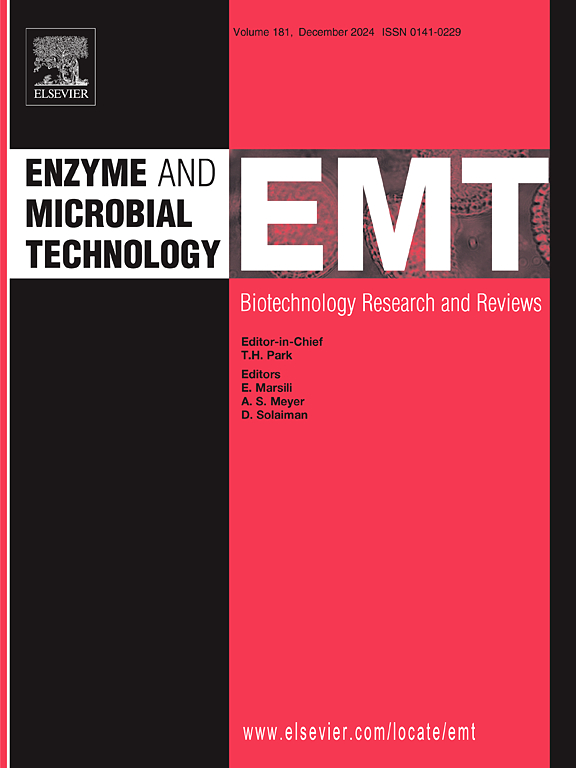Developing a urea biosensor and safe blood cleaning method utilizing a novel high throughput La-doped CeO2 nanosized artificial urease with high biocompatibility and enzyme-like activity
IF 3.7
3区 生物学
Q2 BIOTECHNOLOGY & APPLIED MICROBIOLOGY
引用次数: 0
Abstract
Herein, a urea biosensor and safe blood cleaning method utilizing a novel high throughput La-doped CeO2 nanosized artificial urease with high biocompatibility and enzyme-like activity were developed. The urease-like activity, stability composition, morphological characteristics, size, biocompatibility, and crystalline characteristics of the artificial urease were assessed. Considering its high urease-like activity, it is applied for both urea biosensing and safe blood cleaning. The effective factors on the sensing conditions were optimized, providing a wide linear range over 1–10 µM and a low detection limit of 0.5 µM. The repeatability and reproducibility assessments revealed a %RSD of 1.7 % and 2.7 %, in order. The selectivity studies and real blood analysis revealed highly selective, accurate, and reliable determination of urea in biosamples using the developed method, providing a %recovery of 97.8–99.5 % with a low %RSD range of 1.4–3.3 %. Besides, the safe blood cleaning experiments were also performed by urea mineralization from blood. The results exhibited a high blood cleaning yield of 99.5 % at a short time of 30 min, revealing 1.8-fold higher cleaning efficiency for the artificial urease compared to native urease. The reusability studies showed that the blood cleaning yield was saved for about 10 cycles and then it decreased by increasing the operational cycles, reaching 78.6 % after 17 cycles. The shelf-life of the urease was also evaluated within 30 days, revealing a high shelf-stability for the as-prepared nanosized artificial urease. Consequentially, the nanosized artificial urease can be practically applied for both urea detection and blood cleaning in the real world.
利用具有高生物相容性和酶样活性的新型高通量la掺杂CeO2纳米人工脲酶开发尿素生物传感器和安全血液清洁方法
本研究利用高生物相容性和酶样活性的新型高通量la掺杂CeO2纳米人工脲酶,开发了一种尿素生物传感器和安全血液清洁方法。对人工脲酶的类脲酶活性、稳定性组成、形态特征、大小、生物相容性和结晶特性进行了评价。由于其具有高的类脲酶活性,因此可用于尿素生物传感和安全血液清洁。对影响传感条件的因素进行了优化,在1-10 µM范围内具有较宽的线性范围,检测限低至0.5 µM。重复性和再现性评估显示,RSD分别为1.7 %和2.7 %。选择性研究和实际血液分析表明,该方法具有较高的选择性、准确性和可靠性,回收率为97.8 ~ 99.5 %,RSD范围为1.4 ~ 3.3 %。此外,还进行了血液尿素矿化的安全血液清洗实验。结果表明,在30 min的短时间内,人工脲酶的血液清洁率高达99.5 %,比天然脲酶的清洁效率高1.8倍。可重复使用性研究表明,血液清洁率可保存约10个循环,然后随着操作周期的增加而降低,17个循环后达到78.6% %。在30天内对脲酶的保质期进行了评估,表明制备的纳米级人工脲酶具有很高的货架稳定性。因此,纳米级人工脲酶可以在现实世界中用于尿素检测和血液清洁。
本文章由计算机程序翻译,如有差异,请以英文原文为准。
求助全文
约1分钟内获得全文
求助全文
来源期刊

Enzyme and Microbial Technology
生物-生物工程与应用微生物
CiteScore
7.60
自引率
5.90%
发文量
142
审稿时长
38 days
期刊介绍:
Enzyme and Microbial Technology is an international, peer-reviewed journal publishing original research and reviews, of biotechnological significance and novelty, on basic and applied aspects of the science and technology of processes involving the use of enzymes, micro-organisms, animal cells and plant cells.
We especially encourage submissions on:
Biocatalysis and the use of Directed Evolution in Synthetic Biology and Biotechnology
Biotechnological Production of New Bioactive Molecules, Biomaterials, Biopharmaceuticals, and Biofuels
New Imaging Techniques and Biosensors, especially as applicable to Healthcare and Systems Biology
New Biotechnological Approaches in Genomics, Proteomics and Metabolomics
Metabolic Engineering, Biomolecular Engineering and Nanobiotechnology
Manuscripts which report isolation, purification, immobilization or utilization of organisms or enzymes which are already well-described in the literature are not suitable for publication in EMT, unless their primary purpose is to report significant new findings or approaches which are of broad biotechnological importance. Similarly, manuscripts which report optimization studies on well-established processes are inappropriate. EMT does not accept papers dealing with mathematical modeling unless they report significant, new experimental data.
 求助内容:
求助内容: 应助结果提醒方式:
应助结果提醒方式:


